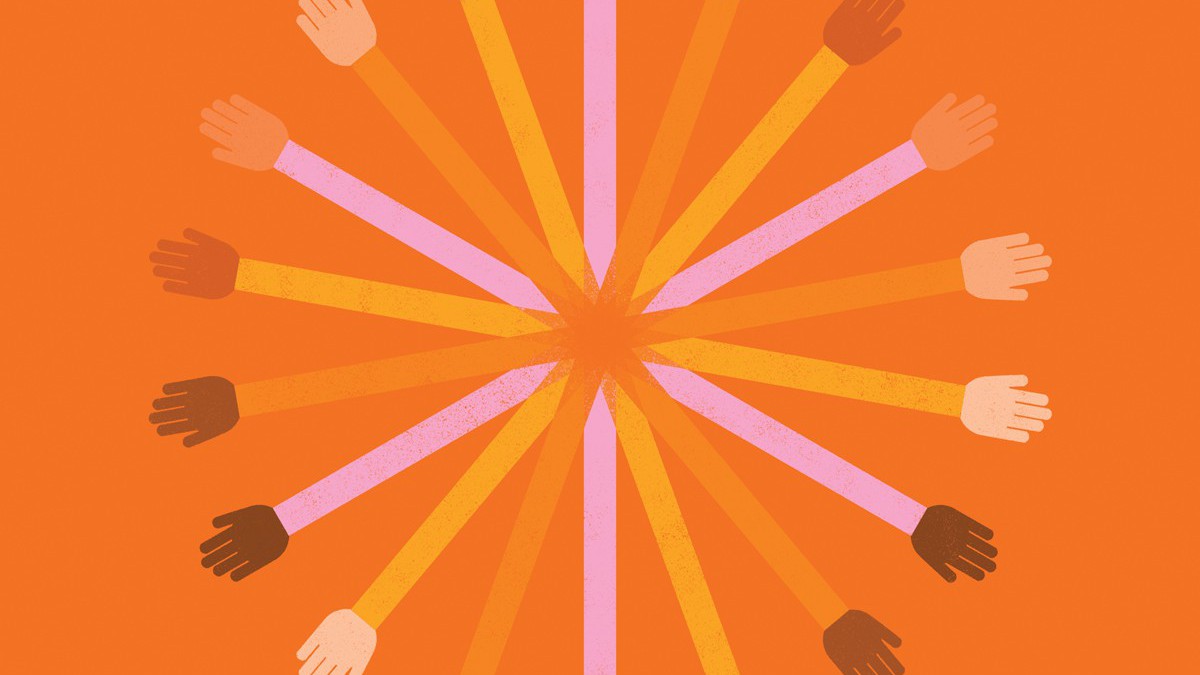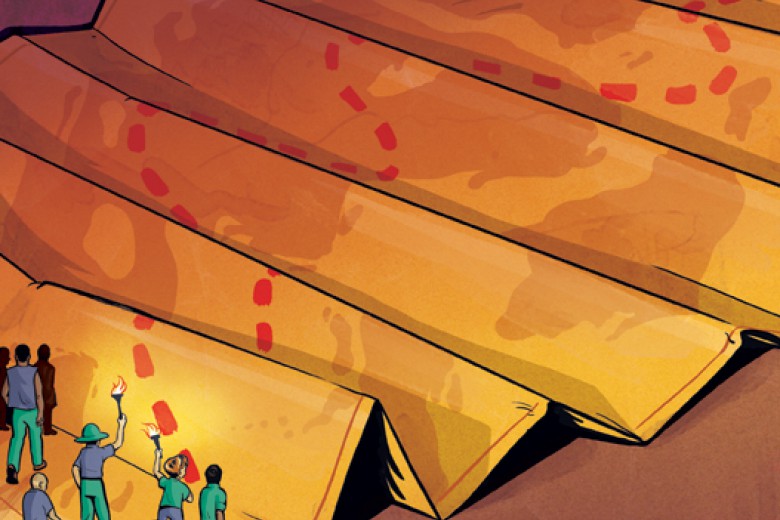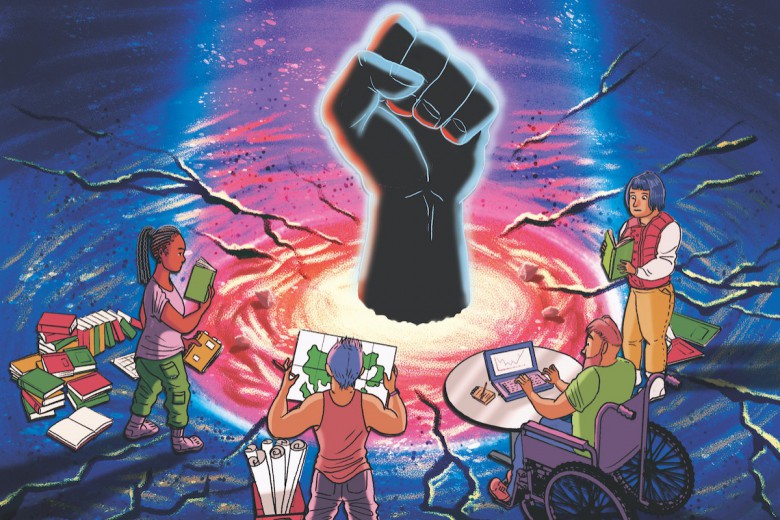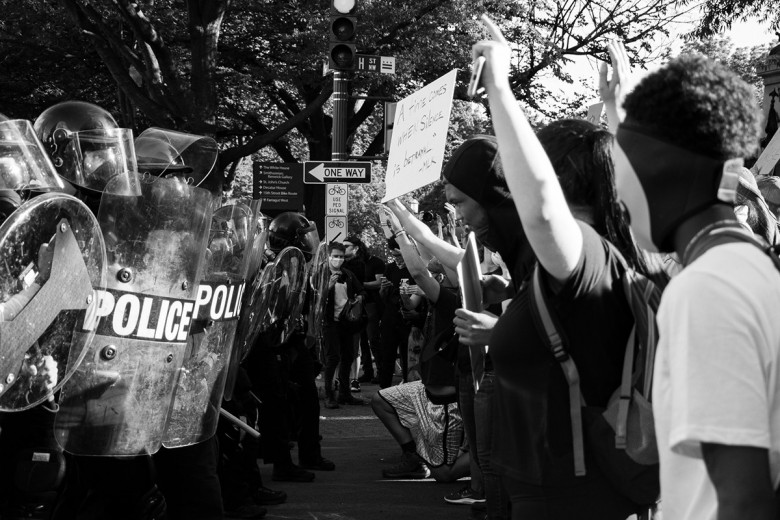Every year since 2002, a small group of people has produced the Certain Days: Freedom for Political Prisoners calendar, a showcase for gorgeous political artwork and thoughtful radical writing, and a fundraising tool used by activist groups across North America. Impressively, the people who produce the calendar do so in collaboration with three political prisoners incarcerated in upstate New York.
How do they manage to accomplish all of this year after year? Relationships, creativity, tenacity, and broader movement support are crucial. But there is clearly another key feature that has kept this project going: Certain Days is run by people organized as a collective – a small group in which all members share decision-making power, rotate leadership and responsibilities, and work collaboratively.
Four years ago, a group of us decided to start our own collective in Ottawa, on unceded Algonquin land. We came together after regularly encountering one another in local activist efforts. We discussed shared politics, investigated our terrain of struggle, identified potential alliances, and established goals for our activity. And then we got to work as the Punch Up Collective – pitching in with protests, organizing educational events, fundraising for campaigns, and constantly trying to learn from our accomplishments and mistakes.
We believe that collectives offer a promising approach to building something that we need in our movements and that can sustain us as people.
The importance of organization
In Ottawa, as in other places, many social justice initiatives are ad hoc and short-lived. Few activist groups manage to stick around longer than a year or two in any consistent form. It often feels as though we’re starting from scratch rather than expanding or strengthening our organizations and networks.
There are many reasons why groups don’t last. Most of us are working and living in precarious circumstances that produce isolation and disorganization. Beyond our material circumstances, it may be that movements also have difficulty being good spaces for people to stick around. In his essay “Someday We’ll Be Ready, and We’ll Be Enough: Building Anti-Authoritarian Movements with the Size and Resilience to Win,” activist Jeremy Louzao perceptively describes this: “Our movements themselves, their structures and attitudes, their narrowness and cultural insularity, their straight-up meanness, pettiness, and violence are all just as much to blame as any outside forces for the ways that we are constantly shedding solid and well-meaning people.”
What’s more, to create and sustain social justice efforts often means learning how to organize, and this isn’t easy to do. As Toronto-based organizer Syed Hussan puts it in a recent blog post, “Organizing is a skill set, it’s not just a set of ideals, and those skills must be honed. There are no schools, and few mentors.”
Organizations, at their best, unleash collective capacities that are greater than the sum of the individuals involved.
All of this makes the idea of getting from where we are now to creating movements that are broad-based and powerful enough to fundamentally change society seem incredibly daunting. When people primarily experience social justice efforts through small, often-dysfunctional groups that fade out quickly, it becomes hard to even picture what long-lasting, sustainable organizing might look like.
But it is possible to build organized, widespread, and resilient left infrastructure that can sustain itself over the long haul. This begins with stronger groups. Organizations, at their best, unleash collective capacities that are greater than the sum of the individuals involved. As Hussan writes, “One person can’t change anything. But a few people, working together, in comradeship[,] certainly can.” Organizations make it possible for people to be visionary and courageous, while also more focused, responsible, and effective.
What is a collective?
There are many useful kinds of organizations, including membership organizations, traditional unions, campaign-based groups, and more. But it’s collectives that we’re keen on. A collective is a non-hierarchical organization, usually with fewer than 20 members. One core aim of collective structure is to reduce the tendency for certain group members, whether formally or informally, to hold more power and influence than other members. For this reason, collectives generally make decisions using consensus or highly deliberative democracy, and many collectives emphasize skill-sharing and mutual support.
In collectives, tasks and roles are shared, often rotating among members so that no one person is always the one, for instance, speaking to the media or doing dishes. In her book Undoing Border Imperialism, Vancouver-based organizer Harsha Walia lays out the reasoning behind this: “Sharing tasks within our groups decentralizes knowledge, ensures a more sustainable division of labor, encourages learning, builds confidence with new skills, and strengthens interpersonal bonds as we work on projects together. Instead of only a few people being ‘in the know,’ this approach fosters a shared sense of responsibility and ownership over the group’s work.”
Collectives can take many different forms. Some collectives are open, always accepting new members, while others are closed, only admitting new people under certain circumstances. Collectives can be defined by their focus: identity-based, as with some groups in the Movement for Black Lives; project-based, as with the collective that runs the AKA Autonomous Social Centre in Kingston; or campaign-based, as with many No One Is Illegal groups. Some, such as the Graphic History Collective, go on indefinitely, while others are based on a particular moment or struggle, like the student activist collectives during the Quebec student strike of 2012.
Collectives, past and present
Collectives have been important formations throughout left history. During the Spanish revolution, grupos de afinidad (affinity groups) were building blocks of radical regional and national organizations. In the women’s liberation movement, collectives were central to organizing activities and running clinics and shelters. Collectives have also been crucial in the feminist organizing of women of colour. Two groundbreaking examples are the Black Women’s Collective in Toronto and the Combahee River Collective in Boston, the latter a group of Black feminists who formulated one of the earliest understandings of what is now called intersectional analysis. There is also a long tradition of collectively run left bookstores, including the Toronto Women’s Bookstore, L’Androgyne in Montreal, and Spartacus Books in Vancouver.
In Ottawa, several successful, long-running projects were organized as collectives. The Ticket Defence Program, which provided free representation in municipal court for individuals charged with panhandling-related bylaw infractions, operated as a collective from 2003 through 2009, and still exists, though its structure has changed. The Carleton Food Collective, also known as the Garden Spot, was founded in 2001 and continues to operate a free soup kitchen. The 7-Year Squat defendants, arrested following the occupation of an abandoned building in 2002, collectively organized their own legal defence during several years of court proceedings, culminating in a month-long jury trial and complete acquittal on all charges.
Activists have used collectives in the anti-globalization movement, Indigenous solidarity work, migrant justice organizing, and many other efforts. Presently, collectives across North America run campaigns, produce activist media projects, coordinate radical spaces, provide legal support, conduct research for movements, and provide training, among a wide range of other activities.
Why build collectives?
Starting a collective doesn’t require significant resources or large numbers of people. It’s something you can do with a handful of people you see regularly and with whom you share some values. In circumstances of widespread isolation and disorganization, building a collective is a low-stakes entry point for those with limited time and energy who are trying to figure out how to engage in activism.
Collectives can also facilitate putting our visions into practice. In an interview in Chris Crass’ book Towards Collective Liberation: Anti-Racist Organizing, Feminist Praxis, and Movement Building Strategy, former Heads Up Collective member Rahula Janowski elaborates on this: “Many of the things I hope to see in that world are best manifested in the here and now through collectives – things like shared leadership; attention to interpersonal dynamics and how they reflect larger social issues; sharing of resources, be they material goods, relationships, or skills; and accountability to the people you live and work with.”
Collectives can enable members to turn their individual values and aspirations for a better world into ongoing collaborative work.
Importantly, collectives encourage a high level of political affinity and trust among members. Even if all members aren’t friends, membership can enable mutual support. This is best when it’s grounded in a shared sense of responsibility, alongside enough support and redundancy that members are able to pass on specific responsibilities to others when necessary. Collectives can also facilitate organizational, rather than individual, collaboration and accountability with other groups and campaigns.
At their best, collectives help people to stay politically involved, become more effective, and keep growing. Perhaps most importantly, collectives can enable members to turn their individual values and aspirations for a better world into ongoing collaborative work and, in turn, to reflect on and learn from that work.
Challenges and considerations
While a collective structure helps to address some common challenges for activists, organizing in collectives can present its own set of obstacles. One of the most pernicious and frequent problems occurs when people pretend that their collectives are structureless or leaderless, or that working in a collective nullifies the social relations of harm and benefit that run through the rest of the world. The problem here, as Walia writes, is that “the denial of structure and leadership just creates a layer of unspoken leadership, and informal hierarchies emerge. Based on systemic power imbalances around race, gender, and education level, as well as experience and comfort in activist circles, certain voices tend to dominate over others.” This is something we’ve witnessed time and again; it frequently leads to collectives falling apart, or certain members leaving, though often without a framework to explicitly name what’s happening.
Other times the collective structure itself can act as a barrier to addressing conflict. For instance, in a collectively run pirate radio station with which one of us was previously involved, the combination of shared vision, commitment to working together, and a meaningful project sometimes actively stood in the way of naming and responding to interpersonal harm and political disjuncture within the group. It’s vital for our political work to not stop simply because we’ve found a group of people with whom we are working on something we care about.
Even though collectives represent a non-hierarchical mode of organizing, this does not mean that they should not have structure. Quite the opposite!
Explicit politics and practices can contribute to shared power and collective leadership by making it plain to all members what is expected of them and their comrades, how decisions are made, and who is responsible for what. Early on, we established a conflict resolution and accountability framework, and we talked explicitly about our priorities for political work and our pace of activity. As a small collective of four people, it felt a bit silly to establish formal policies to guide our interactions and ways of working together, but these policies and explicit practices form a crucial foundation for our collective, enabling us to grow and work through difficult situations when they arise.
We’ve found, too, that collectives work best when they are based on clearly articulated shared aims and politics, and when they see themselves functioning as part of an ecosystem of broader movements. This can help to limit navel-gazing or an insular orientation and encourage the building of relationships among collectives and other organizing formations. Functional collectives also have shared understandings of the skills and capacities of members and actively work to develop these further.
Experimenting with answers
We often have many unanswered questions about how best to build and coordinate collectives, how to develop complementary vision and strategy, and how to fit our approach within a dynamic ecosystem of movements. However, all of us can more easily experiment with answers to such questions if we take a first step of coming together with other people in organized, sustained groups. Collectives are not the only way forward, but they represent a relatively easy and effective way to get organized and work together with mutual aid, co-operation, and care.
This is a moment of significant opportunity. Thousands of people are mobilizing for the first time, or rejoining the struggle after some time away. We firmly believe that well-organized collectives can contribute to resilient left infrastructure that will help us find one another, share knowledge and experience, stick it out over the long haul, and grow large-scale, formidable movements. Let’s build!







